Edge of Spider-Verse has been an unexpected surprise, especially coming on the heels of some lackluster “special edition” stories over the past few months, like the 100th Anniversary Spider-Man comic and the Inhumanity Spider-Man tie-in. Whereas the Edge of Spider-Verse mini could have very easily been another cash grab for Marvel, thus far it has produced a very good Spider-Man Noir tale and an exceptional character introduction in Spider-Gwen.
As such, the bar has now been raised for this series, and I’m not so sure that Edge of Spider-Verse #3, which introduces Dr. Aaron Aikman as “The Spider-Man” is some kind of Blade Runner-esque dystopian universe, comes close to the heights achieved with the Noir and Spider-Gwen stories. But it’s hard to dismiss this comic outright as pejorative filler since I think Dustin Weaver, who doubles as the writer and artist, tries very hard to make something out of his new Spider-Man character. The story just ultimately falls flat for me.
I would imagine that most difficult thing about creating a new Spider-Man is determining the delicate balance of making the character wholly original, and thus distinctive, while also maintaining a sense of familiarity. Many people, who are a lot smarter than me, have painstakingly analyzed what makes a hero “Spider-Man” – i.e. with all of these different iterations of the character in comics, movies, cartoons, video games, etc., what are some of the core elements that unite them into a recognizable entity. In reading a bunch of these alternative Spider-Man stories in advance of “Spider-Verse,” I’ve noticed a trend of creators putting more focused on the “spider” elements of Spider-Man – whether it be a character receiving a spider-bite or some kind of spider-DNA infusion – but for me, this is immaterial when compared to the morality tale Spider-Man’s origin story presents.
In other words, “with great power – there must also come great responsibility,” is very, very important for a Spider-Man story. And I think all of the great tales, whether it be Peter Parker, Miguel O’Hara, Spider-Man Noir or Spider-Gwen, all honor this credo to some degree. There’s a great scene in the Spider-Man 2099 Meets Spider-Man one-shot that I just wrote about where one asks the other why they became Spider-Man. The answer: “because I had to.”
And that’s where I think Aaron Aikman’s origin story/narrative goes astray because I never got a clear sense why this guy injected himself with spider-DNA and how he was further inspired to create all of this high-end technology that transforms him into a superhero. He has this girlfriend, Kaori, who’s daughter was left in a vegetative state after she was struck by a car, but all of that information serves a different plot point, not The Spider-Man’s reason for existence.
In fact, as a whole, the story lacks a clear identity. Whereas the previous two issues of this series were very economic about how they presented the necessary character exposition, Weaver’s script was far more painstaking and laborious. And I was still scratching my head as to who these characters were and where they existed. A few paragraphs earlier I described this world as a Blade Runner-esque dystopian universe, but I’m not even sure that’s accurate. Was this the future a la Spider-Man 2099, or some kind of steampunk robotic-dominant universe in the present day? I can’t say with any degree of confidence. Also, the comic seemed to have an Asian-flare to it, but at the same time, it was completely unclear if this was taking place in Japan, or some other Pacific Rim country. Just odd.
There are other smaller things about the script that are disconcerting. The fact that a villain, Redeye, is introduced (on a Marvel trading card, which is another curious device) as “the reason” Aaron is Spider-Man without any additional context. Then the comic goes on to focus on another villain anyway. It’s just one instance of a very stilted, exposition-heavy narrative. In fact, one could make the argument that the bulk of the dialogue read like something you’d find in a cut-sequence in a RPG video game.
And yet, Edge of Spider-Verse #3 is a beautiful comic. Like really, really gorgeous – probably one of the best looking Spidey books I’ve seen this year. Weaver creates a lush, multi-layered world that feels like a living, breathing city. There’s one double page spread of Spider-Man swinging above the skyline and it looks like something straight out of the John Romita Jr. Spider-Man days in terms of the level of detail and its dynamism. I don’t know if I need to read more of Aaron’s story, but I definitely want to see Weaver provide pencils and inks for more Spider-Man comics.
Edge of Spider-Verse #3 ends of a very offbeat note when compared to the previous two issues – as Morlun arrives at Aaron’s door as he’s about to go out and save the city as The Spider-Man. Morlun tells him that his story is over – and with that being the final page it is to be assumed that Aaron bites the dust there. While I would have appreciated a clearer ending, especially in a comic that already dedicated so much of itself to its exposition, but at the same time, I like the idea of Morlun just popping up in some of these stories and pulling the plug on a character. It pushes forward this idea of Morlun and his family being a world-ending threat for the “Spider-Verse,” which is going to be a key part in keeping the tension and drama high as this story marches onward.

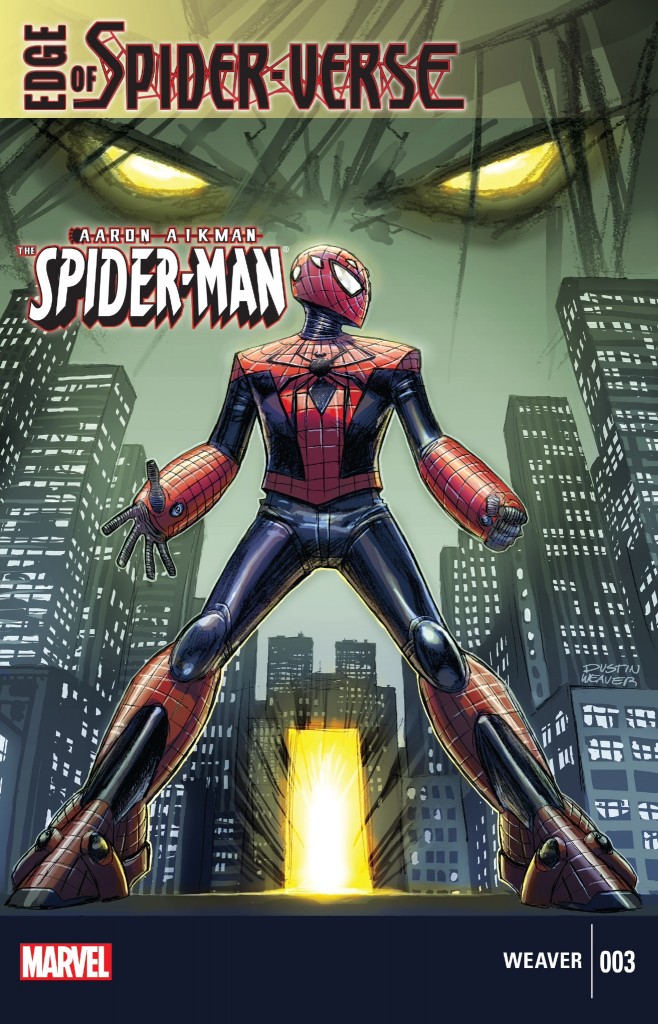
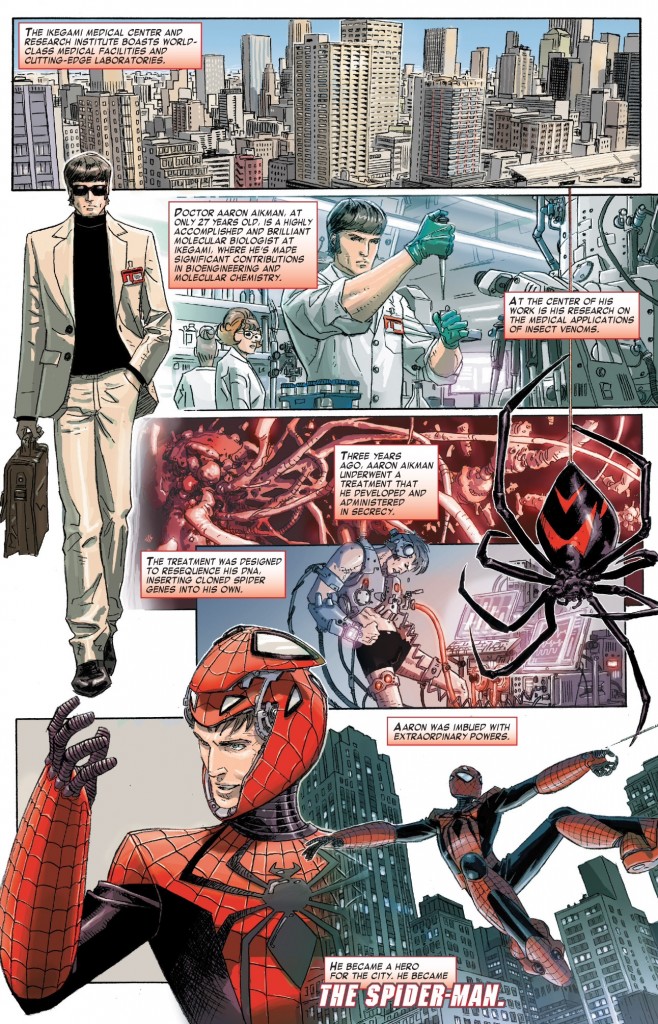
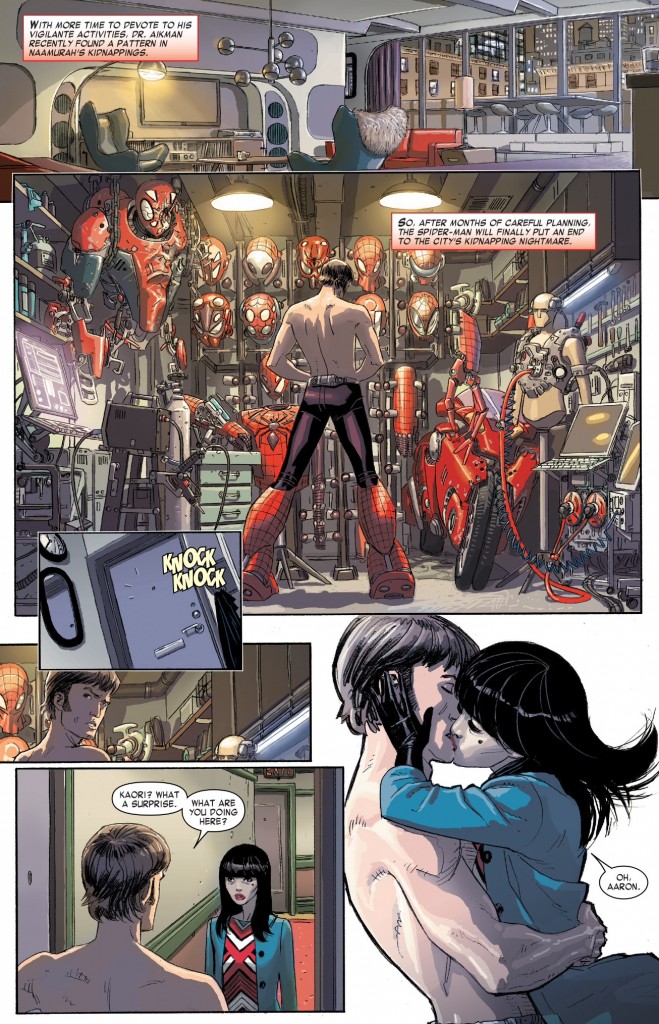
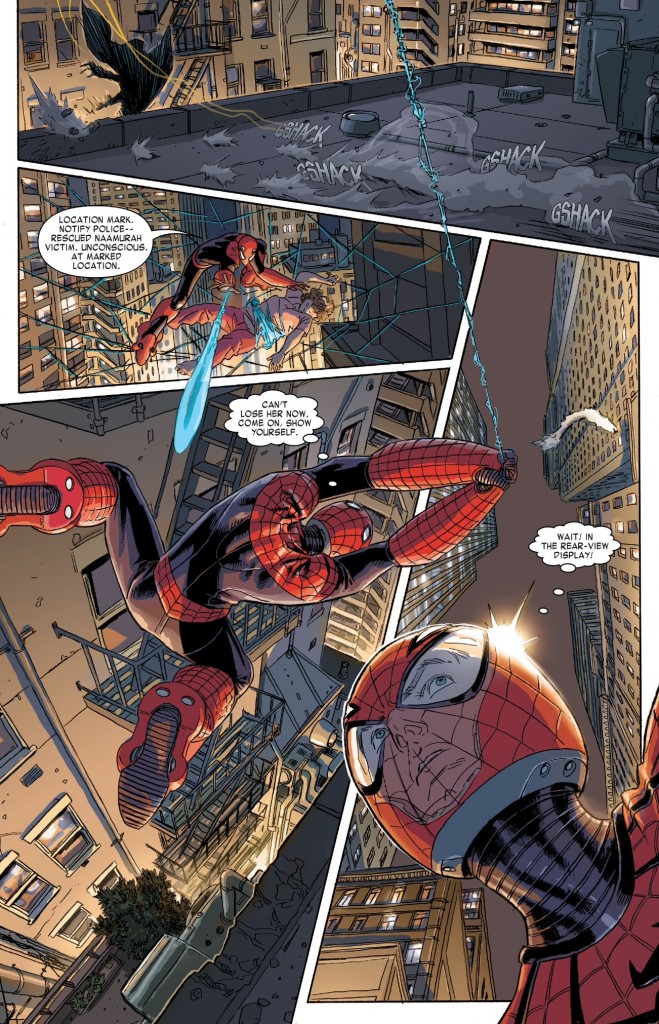
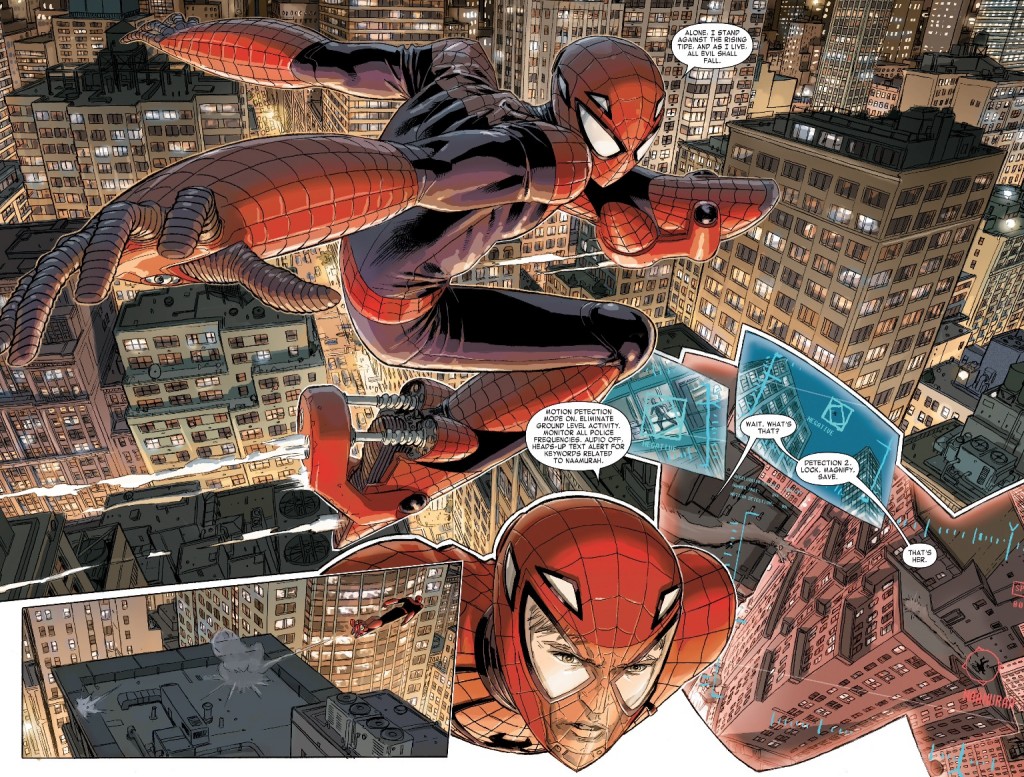

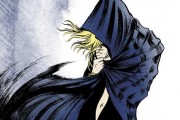
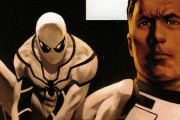
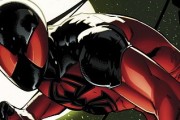
This has been my favorite issue of Edge of Spider-Verse so far.
Although we only caught a glimpse of them, I really liked the world and characters that Weaver created. The Spider-Aik universe just seemed complete. It didn’t seem like a tie-in at all. I loved the stuff with Kaori and thought her story was really touching. I agree that Aikman’s reasons for becoming Spider-Man weren’t fully explained, but that didn’t bother me at all. In fact I didn’t even notice that particular failing until I read your article.
Glad you liked it! Again, I didn’t think it was abjectly horrible, just wasn’t my cup of tea. Beyond the motivations, I just wish it was a bit clearer in terms of time and place. It left a lot for the reader to assume and in a story like this that’s one-and-done, I kinda like a little more laid out for me!
I loved the Marvel Trading Card character bios, all the details spelled out not just an alternate Spider-Verse, but a whole alternate Marvel publishing company with a complete history. The story itself was a strange hybrid of obviously-trying-to-bring-us-up-to-speed and pretending to be mid continuity (even if it’s a continuity that presumably comes to an abrupt and unceremonious end). Ultimately it worked well enough for me.
I got the impression too from this comic that this universe’s Spidey’s lack of “power and responsibility” angle was what ultimately going to lead to the downfall of the character (and possibly the rest of his universe) before Morlun showed up to do it.
I enjoyed it, as I’ve enjoyed all the Edge stories. I’ve been listening to old episodes of the Classic Tales of Spider-Man podcast and it (plus Learning to Crawl) has had me thinking about Peter’s origin and how someone else in his situation could easily have turned out very differently, which made issue #4 especially perfectly timed for me.